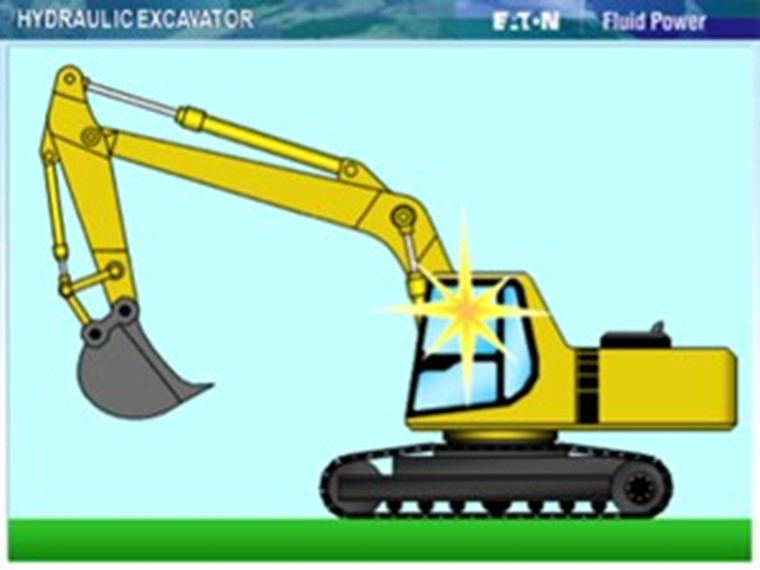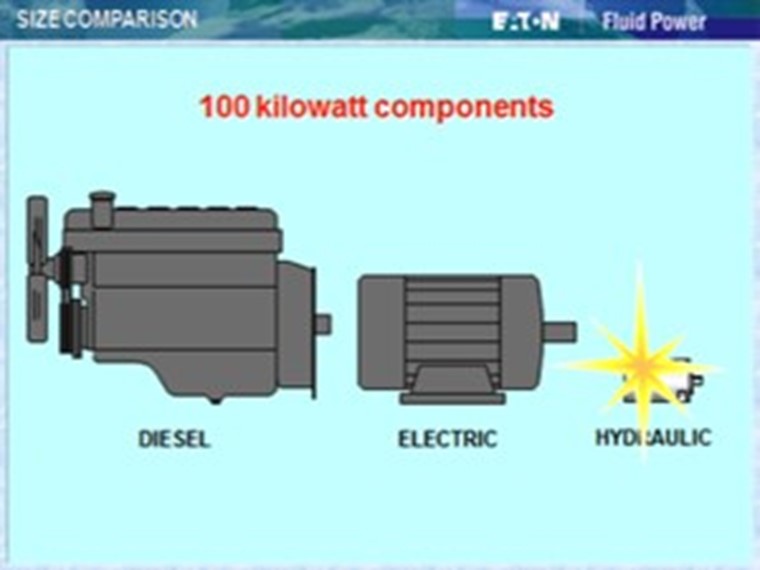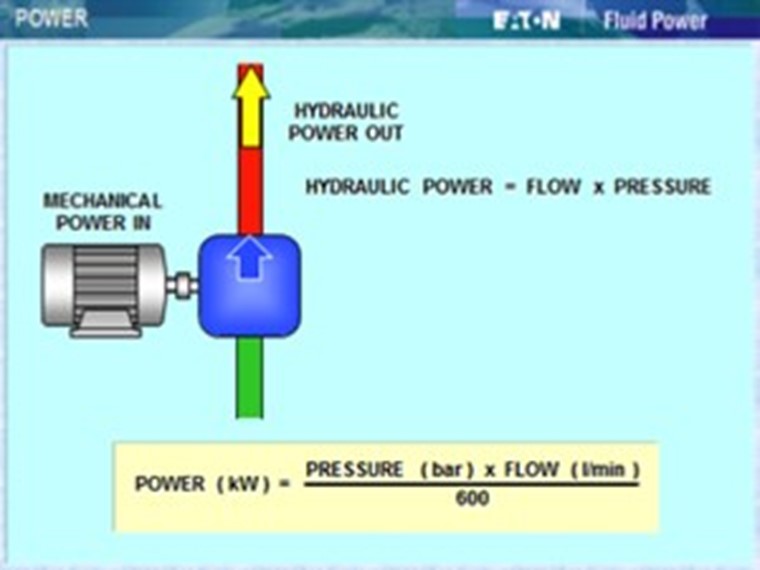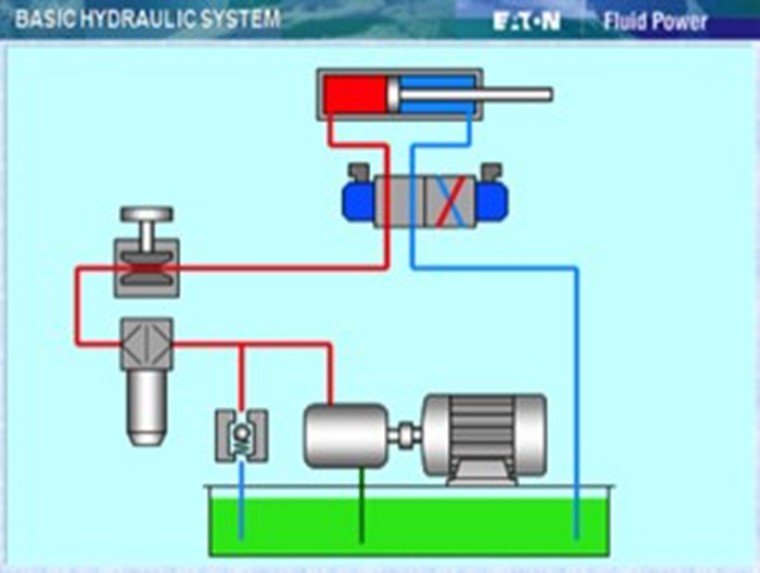Introduction
Hydraulic power is generated through a combination of oil flow and pressure. Oil flow and pressure is created from a hydraulic pump and transmitted through hoses or tubes, via control valves, to the hydraulic motor or cylinder that will do the work.
One of the key advantages of hydraulic systems is to be able to transmit large amounts of power from a remote power source (electric motor or internal combustion engine) to a compact actuator.
This type of power transmission is clearly demonstrated on excavators where the hydraulic cylinders are attached to the boom and the diesel engine and pumps are mounted behind the cab. All functions are controllable by the operator in the cab.

Hydraulic Power Density
Hydraulic pumps, motors and cylinders are very power dense. This means that the amount of power they can absorb and transmit from a compact envelope give designers of machines the flexibility to locate the pumps and actuators in the most advantageous position.
As shown to the right, if you compare the size and weight of a diesel engine, electric motor and hydraulic motor each capable of delivering 100kW of power, the hydraulic motor is the most compact. It is also the most robust, suitable for hazardous environments and sealed against water and dust ingress.

Hydraulic Power Calculations
Theoretical hydraulic power is calculated as :
Hydraulic Power (Watts) = Pressure (Pa) x Flow (m3/s)
In order to calculate hydraulic power in the units we normally use in hydraulics, this formula is modified to:
Hydraulic Power (kW) = Pressure (Bar) x Flow (l/min) / 600
Because transmitting hydraulic power is not 100% efficient, the inefficiencies of the system have to be taken into account. Depending on the hydraulic circuit design and components used the amount of usable power at the actuator can be 50-80% of the input power.

Hydraulic Power Control
In order to control the transmission of hydraulic power from the pump to the actuators a range of control valves are used. The speed of a motor or cylinder and the torque or force that can be generated is infinitely controllable using directional, flow and pressure control valves.
Even though hydraulic systems have power losses which result in heat generation, the ability to smoothly transmit large amounts of power from a prime mover to multiple actuators means hydraulics are found in almost every industry and predominant in mobile equipment.
For more information on hydraulic power talk with one of our sales engineers by calling 0508 497 732 or drop us an email
